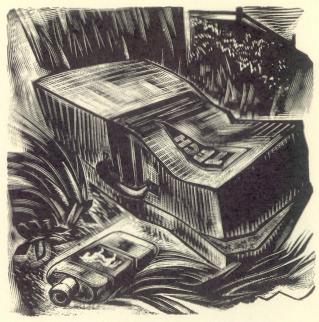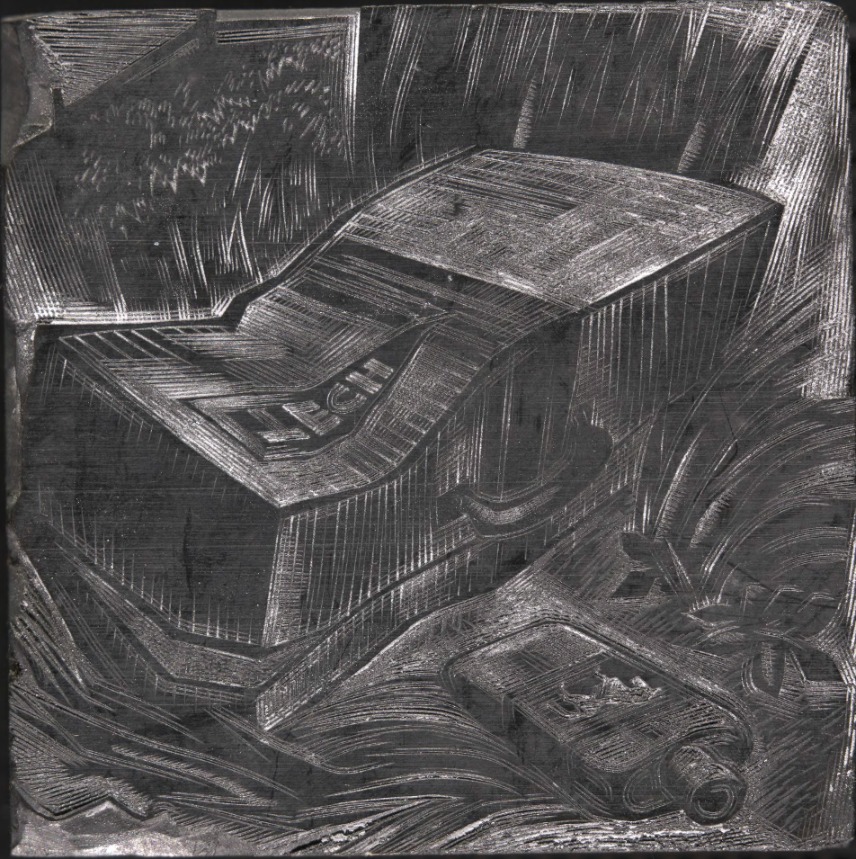The Boy : IMAGE 174 : Intemperance
This Image connects to and concludes a triad of Images originating in the Elderly Gentleman section (I111).
This image dramatically connects the death of a reckless motorist to alcohol consumption. Elsewhere in the text (see I113), a strikebreaker is shown guzzling liquor in order to prepare himself to commit acts of violence. Ward’s subliminal temperance lecture reminds us that, at the time he was creating Vertigo, the Eighteenth Amendment and the National Prohibition Act had but recently been overturned by the Twenty-First Amendment (December 6, 1933).11 Over the years, the popular imagination has tended to satirize the supporters of Prohibition as fuddy-duddy Puritanical do-gooders or spoil-sport hypocrites or political toadies and charlatans.
It is useful to recall however that the drive to illegalize alcohol consumption arose in progressivist nineteenth century movements concerned with issues that are still relevant, such as women’s rights (see Mark Twain’s essay on "The Women’s Temperance Movement")11, and that, alcohol (and substance abuse tout court) is still a social problem. It continues to be a major cause of road fatalities12, and even though experts do not posit a cause-and-effect relationship between alcohol abuse and violence—including domestic violence—they do acknowledge a significant association between alcohol and violence. In "Alcohol and Crime: An Analysis of National Data on the Prevalence of Alcohol Involvement in Crime," prepared for the Assistant Attorney General’s National Symposium on Alcohol Abuse and Crime, April 5-7, 1998, Jan M. Chaiken writes: "We now know that nearly 4 in 10 violent victimizations involve use of alcohol, about 4 in 10 fatal motor vehicle accidents are alcohol-involved; and about 4 in 10 offenders, regardless of whether they are on probation, in local jail, or in State prison, self-report that they were using alcohol at the time of the offense."13
President Roosevelt’s announcement of the delegalization of alcohol in 1934 helps to further place Ward’s attitude in perspective. As reported in The New York Times, for, Sunday, December 6, 1933, Roosevelt proclaimed that "this return of individual freedom shall not be accompanied by the repugnant conditions that obtained prior to the adoption of the Eighteenth Amendment and those that have existed since its adoption." He also spoke of a national educational policy that would contribute to "a greater temperance throughout the nation," and expressed a personal wish, which formed part of the newspaper headline, that saloons would not be reopened.
Before closing our discussion of Vertigo and alcoholism, let us note that alcoholism is a significant contributing factor in the beatings The Boy sustains in his childhood and youth, which drive him from his home. I159 shows the father wildly attacking The Boy as a young man, with belt in one hand and whiskey bottle in the other. I153 depicts him whipping the helpless Boy, then a mere child: While no bottle is visible in I153, Ward has made the image part of an homologous pair with I159, so that alcoholism can be inferred. In a sense, the image of the college suitcase and the bottle stand as oppositions, just as the images of the rose and the telephone in I96, each symbolizing a choice between life and death.
Print view

